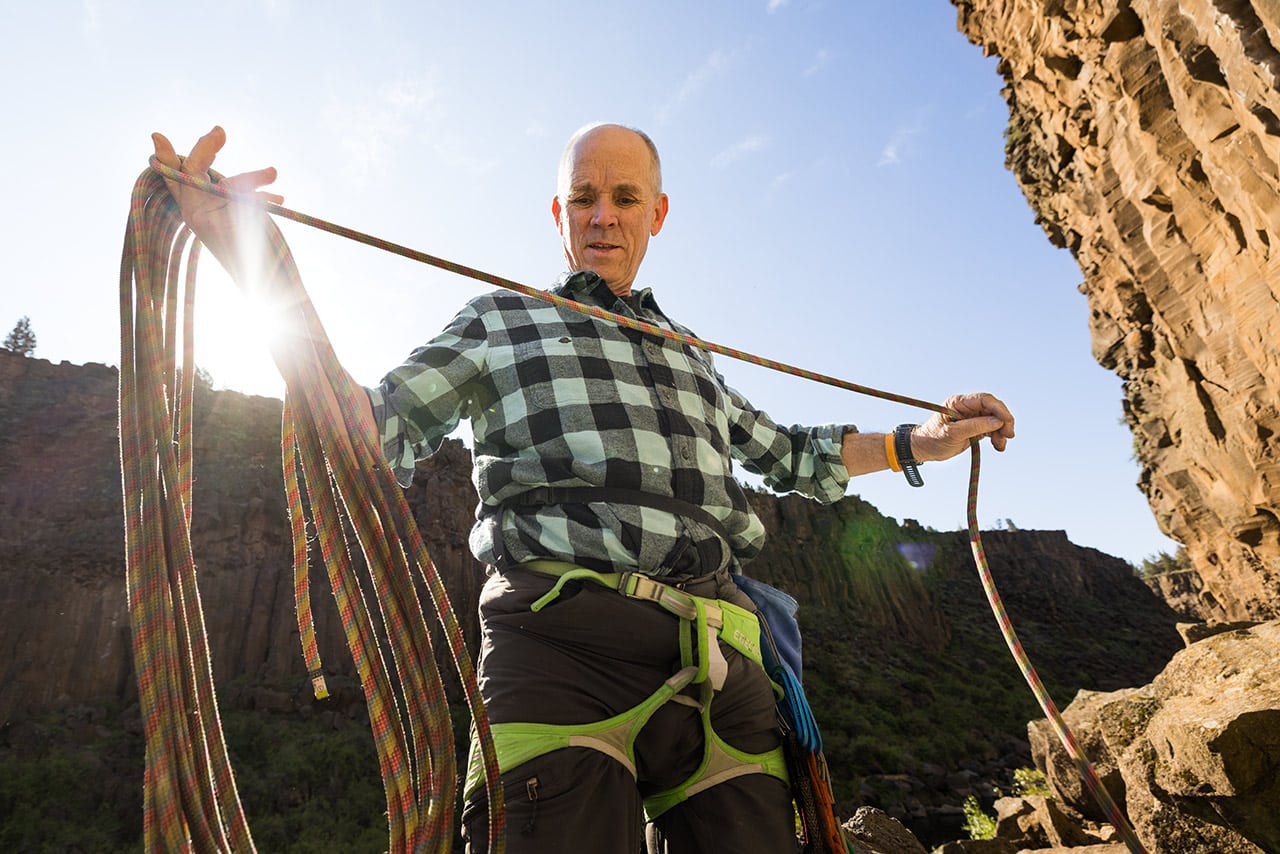For Darla Naugher, the decision to have hip replacement surgery became clear while on a beach vacation in Mexico. Instead of running on the beach with her sisters, as she usually would, she simply could not keep up with them. In fact, she could hardly walk at all, because of the pain in her hip.
Like many Central Oregonians, Naugher has a passion for fitness and outdoor recreation; exercise and running were part of her routine and part of her identity, as well. At age 50, she had no intention of slowing down, until she learned more about what was happening to her hip joint.
“I’d been dealing with some foot problems, especially with the joint in my toe, and I assumed that my uneven gait was making my hip hurt,” Naugher explained. She found help from a chiropractor and physical therapist, but eventually she was sent to Dr. James Hall, an orthopedic surgeon at The Center in Bend. Her x-rays clearly showed how the cartilage in her hip socket had degraded, leaving the ball of the femur bone-on-bone in the socket.
Naugher understood that a total hip replacement was the best treatment to relieve her pain, but she wasn’t ready yet. “Dr. Hall said I’d know when it was the right time for surgery,” she said. “But I thought I was way too young—hip replacements were for old people!” said Naugher. Missing out on the fun on her beach vacation was the turning point. She worried that life would soon start passing her by, and she decided to learn more about joint replacement.
About Hip Replacement Surgery
When wear-and-tear arthritis breaks down the smooth cartilage that cushions bone movement within a joint, often the only treatment is a total joint replacement. The surgeon removes the damaged parts of the hip joint, and replaces them with implants made of metal and ceramic or a durable plastic. These implants fit into the bone and recreate the ball and socket of a healthy joint.
New advancements have changed the way this surgery is done, with less disruption to surrounding muscles and tissues.
“Our techniques are so much better now. The incisions are minimal, and the new components have better longevity,” explained Dr. Hall.
Traditionally, hip replacements were only done in a hospital setting, where patients stayed for one or more nights. With the recent advancements, hip replacements can now be done at outpatient surgery clinics. Patients leave the surgery center within hours after the procedure, and begin their recovery in the comfort of their own home.
Choosing Outpatient Care
Dr. Hall found Naugher to be a good candidate for outpatient surgery. “It’s important that patients are in good health overall, and are very motivated to work with the physical therapists,” said Hall. Outpatient surgery candidates also need a key person to stay with them for several days, who communicates with the surgery center staff and supports the patient’s recovery. Naugher fit all of those conditions.
Not every patient finds outpatient surgery to be the appropriate choice. For patients over age 65, Medicare restrictions only cover traditional hospital settings for joint replacement. Some health conditions, including chronic pain problems and sleep apnea, make in-patient surgery a better option. But fit, active patients like Naugher often prefer to avoid hospital settings.
Cascade Surgicenter was the first surgery center in Central Oregon to offer outpatient joint replacement in October of 2015. The surgical group based their protocols on well-established best practices from outpatient centers around the country, and built a support team of nurses, nurse practitioners, and physical therapists with expertise in joint replacement recovery. The trend towards outpatient surgery is growing, according to Dr. Hall, especially among Bend’s population of outdoor enthusiasts.
Naugher felt confident about choosing outpatient surgery for her hip replacement after talking through her concerns with nursing staff at Cascade Surgicenter. “They answered all my questions so thoroughly. I can’t say enough about how good they are,” she said.
Recovery At Home
For the first few days after surgery, Naugher needed help from her sisters. The discomfort was manageable and the need for pain medication was short-lived. The greatest challenge for an active person, like Naugher, may be to follow the doctor’s orders to take it easy.
“The healing happened quickly. I had to promise to do no exercise the first six weeks, and that was the hardest part,” said Naugher. “I felt good, but I just had to stay out of the gym and let it heal.” After a few days of using a walker for balance, she began walking without support. Two weeks later, she returned to work. Once she was cleared to begin physical therapy, Naugher made it a mission to get back to her previous level of fitness.
One year later, Naugher is on the move again, and barely notices any limitations. “It’s a new lease on life, really. I can do anything—I can hike, go to spin class and yoga. I can wear cute shoes again too!” she laughed.
Because her other hip also shows signs of cartilage damage, Naugher has chosen to replace running with hiking, to minimize the impact on that joint. Fortunately, the hiking opportunities in Central Oregon are plentiful, and she heads out to the trails regularly with her dog at her side.
Smith Rock is a favorite destination, and climbing up to take in the views are all the sweeter these days, with no pain to hold her back.
Her advice to anyone considering hip joint replacement surgery? “Once you learn that your pain won’t get better without surgery, don’t wait. Don’t give up all that time, and miss out on a good quality of life while you wait for your hip to get better.”
The Center Orthopedic and Neurosurgical Care offers free seminars on outpatient total joint replacement at OSU-Cascades Tykeson Hall. To learn more or to register for a seminar, contact The Center at 541-322-2211








